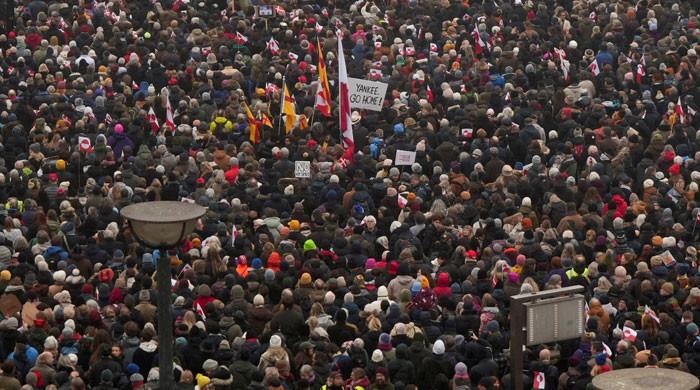WATCH: Solar Geoengineering – can it counter climate change?
So far, scientists and researchers have identified three potential ways to bring temperatures down
November 25, 2021
Scientists are split on whether they need to do more research on scientific methods, which can be used to cool down the earth and combat global warming.
“There’s no doubt whatsoever that humans can artificially cool the planet,” David Keith, a Harvard professor, who is researching how to modify solar radiation in the atmosphere, told DW.
So far, scientists and researchers have identified three potential ways to bring the temperatures down: solar radiation modification, producing foam in the oceans and painting the roof white.
The sun is constantly throwing solar radiation at the earth. Some of the heat is reflected by clouds and the earth’s surface, while some are retained. Add to that, man-made emissions of greenhouse gases intensify the heat, resulting in global warming.
One way to deal with this phenomenon is called solar geoengineering. Using this technique, tiny particles called “aerosols” can be injected into the stratosphere. Mixed with water droplets, these aerosols can then reflect the sunlight for about one to three years.
“There is evidence from basically every single climate model that shows that if you do a pretty even north to south, east to the west distribution of [aerosols] you can reduce many of the most important climate hazards,” added Keith.
But to cool the planet permanently, aerosols will have to be injected into the atmosphere over decades and can cost an estimated $18 billion to lower the temperature by even one degree.
Then, there is a danger that this technique can alter water patterns. Some studies suggest it could lead to acid rain. Others warn of damages to the ozone layer. While a few studies state that it could lead to reduced rain in India and Africa.
“There is concern that using solar radiation management could alter rainfall and cloud formation patterns,” Barbara Unmüßig, co-president of Germany’s Green Party’s Heinrich Böll Foundation, “In our opinion, there are risks that cannot be calculated.”
Fortunately, there are other options to make the planet cooler.
Dark blue surfaces of the oceans absorb sunlight, but brighter surfaces reflect radiation. Scientists suggest adding bubbles to the ocean to reflect more sunlight.
“The idea of microbubbles in the ocean is to make a foam to reflect away some portion of incoming solar radiation and to deploy it in strategic locations,” said Dr Corey Gabriel, a climate scientist at the University of California, San Diego.
Scientists have suggested using special ships to churn up foam in the ocean. But the problem is that bubbles burst after mere seconds and to reflect the sun they would have to stay on the ocean’s surface for days.
One proposal is to use chemicals to produce bubbles but that could have an effect on marine life. It could also alter the weather patterns. This is why the third option of reducing temperatures is being considered the safest and cheapest method of all: simply painting houses and roofs white to reflect radiation.
“Local temperatures could be decreased by something of the order of one degree or less,” said Professor Sonia Seneviratne.
This could lead to less need for air conditioners as well. The benefits would equal offsetting emission of around 700-mid size coal power plants. But there is a catch here too: the approach only works locally and it doesn’t affect the global climate.
Even while scientists explore new methods to cool down the earth, these methods do not take away states and companies responsibility to cut global emissions quickly.
— Thumbnail image: Reuters/Michaela Rehle











